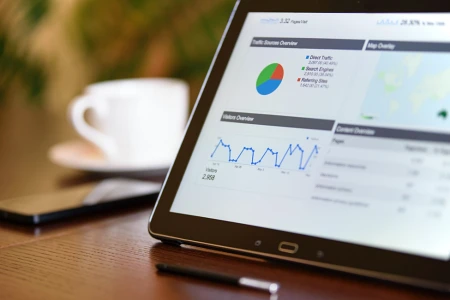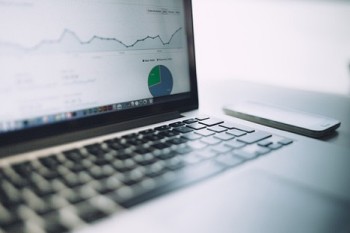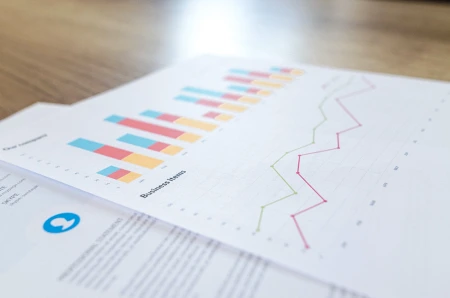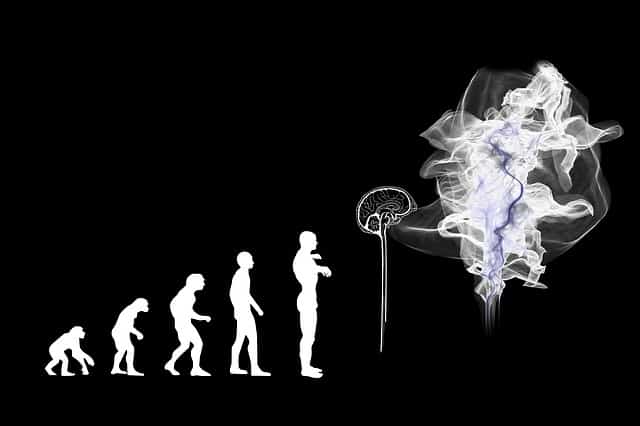In data centers where terabytes of data is present and need to be analyzed, it undoubtedly becomes a tedious task, and appointing analysts no longer remains a practical approach. Imagine a spreadsheet containing data from many units and is given to eighty to hundred analysts for analysis. You will notice that the results obtained from different individuals are different, no matter how clearly the data is labeled—ultimately risking the credibility of results and team productivity.
In today’s world of Data Analytics, Business Intelligence, and Machine Learning, we can gain valuable findings very efficiently from these technologies and devise a more practical approach to analyze, audit, and govern data insights. Moreover, it ensures data integrity and credibility of results. Hence, on a larger scale, automated machines using intelligent algorithms and perform tasks with almost no human errors and efforts.
As we know, processing raw facts and figures, analyzing and then drawing conclusions from the information is the need of the hour for many organizations. Most of the large firms are not still aware of the usage of modern analytics tools to streamline their efforts for data analytics. This saves the analysts from the unnecessary hustle and minimizes their actions by focusing on the main work.
Data analytics has attracted large firms because it can help them handle their businesses concerned with Big Data by analyzing tons and tons of data without manual work. So, we have got you covered if you are a data analyst who wants to minimize manual work and learn how to get started with analytics involving automation. In this article, you will learn everything related to Automated Analytics. Read this article till the end, and you will have all your questions answered.
What is Analytics and Automation?
Analytics refers to the methodology of finding and interpreting significant patterns in data and then presenting them in a proper way. Over the time data analytics has become a separate field and attracted the attention of people as a discipline. Analytics can be done manually and also via automation.
The term “automation” is defined as the approach used to make things work automatically. With the help of automation, the tasks are done without much human effort. Simple basic tasks are automated using digitizing tools, and then the results are obtained without much human effort. Automation refers to replacing humans with tedious and repetitive tasks that require much unnecessary effort. So, rather than doing such tiresome work manually, machines are automated using Machine Learning, Deep Learning, Neural Networks, and Natural Language Processing (NLP) to perform tasks and obtain accurate results.
The foundations of automation may be found in mechanization, which dates back years, if not millennia, as people have used technologies (even primitive ones like stone tools) to replace human activities throughout history. The invention and implementation of automated teller machines (ATMs) and kiosks at airports instead of human personnel to check-in passengers and issue flight documents are examples of automation being utilized for knowledge-based jobs.
Automated Analytics
Automated Analytics refers to analyzing large datasets with the help of computerized machines embedded with intelligently analyzing algorithms. It involves machine learning algorithms designed to detect patterns and trends in the data and then draw conclusions from the results without manually analyzing the data. This analytical approach is helpful for the organizations involved in business handling.
This technique of automating machines proves to be very useful for such firms. The reason is that instead of appointing separate analysts for analyzing trends in complex and large datasets, it helps keep track of user metrics and monitor functional performance in a much better way. The automated algorithms keep track of the user data and automatically detect the changes in the datasets, generate alerts and deliver reports to the relevant unit.
Data analysis through Automated Analytics is different from traditional spreadsheets in a way that instead of strolling through large volumes of data in tables and verifying results from formulas. We can train machines upon self-check business intelligence algorithms to analyze and monitor customer insights by ensuring data integrity and literacy.
Getting Started with Automated Analytics
Such self-functioning business intelligence aims to unveil business insights, quickly understand your data, and devise algorithms that do not require much training. Automated Analytics strategies are different from each other, and their complexities vary according to their application and the size of the organizations using them. These automation mechanisms can be simple scripts or complex models that fit the data classification models and help in data classification, analysis, and valuable insights from the tests.
Data analytics can be automated by following simple steps on the organizational level to avoid controversies at any station. Below are the main steps that professionals should follow when getting started with automated analytics.
- Clearly State your goals:
The first step in getting started with automated analytics is to clearly state the goals and objectives that are aimed to achieve from the resultant insights. All the teams must take part in this process of defining the objectives and expectations so that there should be no error in the insights at the conclusion stage. This step creates cooperation and harmony between the teams and helps them work for a common goal.
- Select the automation tools that are in the best interests of your goal:
The next step in data analytics automation is to select the tools in your goals’ best interest and support your objectives. The automation tools such as NumPy from Python, Ruby, and SciPy help automate algorithms involving Machine learning and other technologies to improve collaborations and perform tasks prone to errors when performed by humans.
- Set the Benchmarks for performance:
To determine the quality of insights obtained from the automated systems, you should set performance metrics so that the analysts can verify whether the metrics are met through the achieved insights. Such metrics are a reference for extending the automated systems in future projects.
Enhancing Data Analytics Using Automation
Automation can help us enhance data analytics. But we need to understand the appropriate time and place for applying automation? It is often considered the most suitable for rules-based tasks, accomplished frequently, and is a component of a robust and durable professional procedure.
Undoubtedly, automating and mechanizing a particular experiment is a good idea, but automating data detection procedures in a company with many data scientists controlling diverse data resources can prove quite valuable. Automation of analytical tasks and processes is a helpful idea:
- Create Control boards:
Creating consoles, control panels, and reporting in general are the best contenders for automation and mechanization. By applying automation techniques in data analytics, one can stream, manage, and accumulate data for broadcasting to shared schemes and live data outlines.
- Data preservation projects
Automation helps to clarify data preservation projects, for example, altering and adjusting a data storeroom. An organization can benefit from devices and procedures that automatically incorporate new data sets and transfer data from old computer systems that are still in use. Stitch parent Talend’s, for example, uses different data incorporation processes that help clients design grouped data movement positions that clients can use for automation and mechanization.
- Data Formulation:
The process of automation can modernize data formulation jobs. Different tools such as the visual programming stage can be used for data classification, preparation, authentication of prototypes, and repetition of study runs to enhance various factors.
- Data validation techniques
An organization can use automatic data validation techniques for errors identification, marking and citation of lost values, and recognition of subject matter and structures not matching with an exact data type. This data automation technique simplifies data modeling systems and compliance to prototypes by automatically modifying data.
- Data duplication:
Knowing data breakdown and duplication programs; an intelligent system can examine the simple and accessible bandwidth. It can operate group breakdown and consumption, manage projects at reasonable periods, and then change running structures in real-time without human intrusion.

Use of Automated Analytics in Business Intelligence
Business stakeholders can use automated analytics to devise strategies such as creating mechanisms for conducting a study on the data, analyzing it, and then using the results to create alerts or improve the operational performance. It helps analysts automatically and regularly improve business strategies by enabling them to adjust input and output parameters in real-time.
Such systems provide data insights that might not be available to the firm. For example, a data analytics firm will use Business process automation, AI-Powered automation, and robotics-powered automation to categorize tons of data. Then deliver the extracted information to the clients by creating interactive data visualizations, including charts, graphs, and other attractive infographics.
Automated Analytics and Big Data
Automation in data analytics helps in the tasks of preparation of datasets for analysis, their duplication, and maintenance. It proves to be valuable when dealing with Big Data in performing above mentioned tasks. The large firms dealing with big data can benefit from automation and getting insights by incorporating changes in the data analytics section of their infrastructure.
The data centers contain tons of unprocessed data that the automated process can analyze much faster and more accurately than any human being. Modern data processing and modeling requirements are also easily streamlined using automation.
Automated Analytics Tools
The concept of extracting features from data through different technologies has gained popularity with the increasing trend of automation science. Different business automation software are used to automate business processes, align the series of activities involved, and monitor the ever-growing data trends in large organizations.
Such tools are standalone automated solutions that automate processes and improve performance by reducing human efforts, improving the efficiency of results, and increasing team productivity. Here is the list of some famous and handy tools for automating business processes.
- Microsoft Power BI Desktop.
Power BI Desktop- an application installed on local computers is considered an essential feature of the Power BI product series. Power BI Desktop application can design and then disseminate BI information. Critical data can be observed and analyzed using the Power BI web service. Moreover, the Power BI service can share control panels, indicator panels, instrument boards, and reports. One can watch their data on mobile phones using the Power BI Mobile application on the AppStore, Google Play, or the Microsoft Store.
- Tableau Desktop.
Tableau helps analysts use drag and drop to analyze data and create attractive visualizations in just a few seconds. It allows ease of use to the users who are not proficient in coding but the drag and drop acts as a savior for them. One more notable thing about this tool is that it can run automated processes in C, C++, R, and Python. Its JavaScript API helps use HTML elements, load them on your web page, and gain information from the Tableau online server. Its rest API allows managing online sites and users and integrating them into the custom application.
It is an end-to-end data analysis tool that quickly helps analysts analyze large and complex datasets. Its API also allows you to integrate the application and create visualizations that depict results. The rest APIs from Sisense enables the users to automate the functionalities and manage customer data.
InsightSquared assists experts related to sales operations in the battering of spreadsheets by providing them practicable and functional, instantaneous intelligence on nearly all sales KPIs. Successful and vigorous automation enterprises depend on the organization’s explanations to predict more precisely, effectively manage different channels, tune rep coaching while relying on personal interpretation, and drive data-backed drafting, designing, and examination.
-
This is how Big Data Analytics differ from Regular analytics

Analytics refers to the process of analysis of raw data or statistics in order to discover, communicate and interpret its meaningful patterns. Analytics is helpful for businesses in decision-making, improvement
-
Business Analytics – Is It Data Science? Let Us Find Out

Business analytics focuses on determining business plans and executing functional improvements within an enterprise using big data techniques as data processing. Business analytics is used to find gaps in current
Conclusion
In this article, we learned about automated analytics that helps businesses and large firms automate their workflows by developing various algorithms. Such algorithms are smart enough to detect the anomalies and patterns in the complex datasets that are hard for humans to study and more prone to errors.
By using machine learning and other scientific approaches, this tedious task is made easy for the analysts so they could focus on the main work rather than doing analysis manually. We also discussed different tools designed to perform analysis much more efficiently. This helps lower the time to spot the ever-increasing number of trends and improve productivity.



